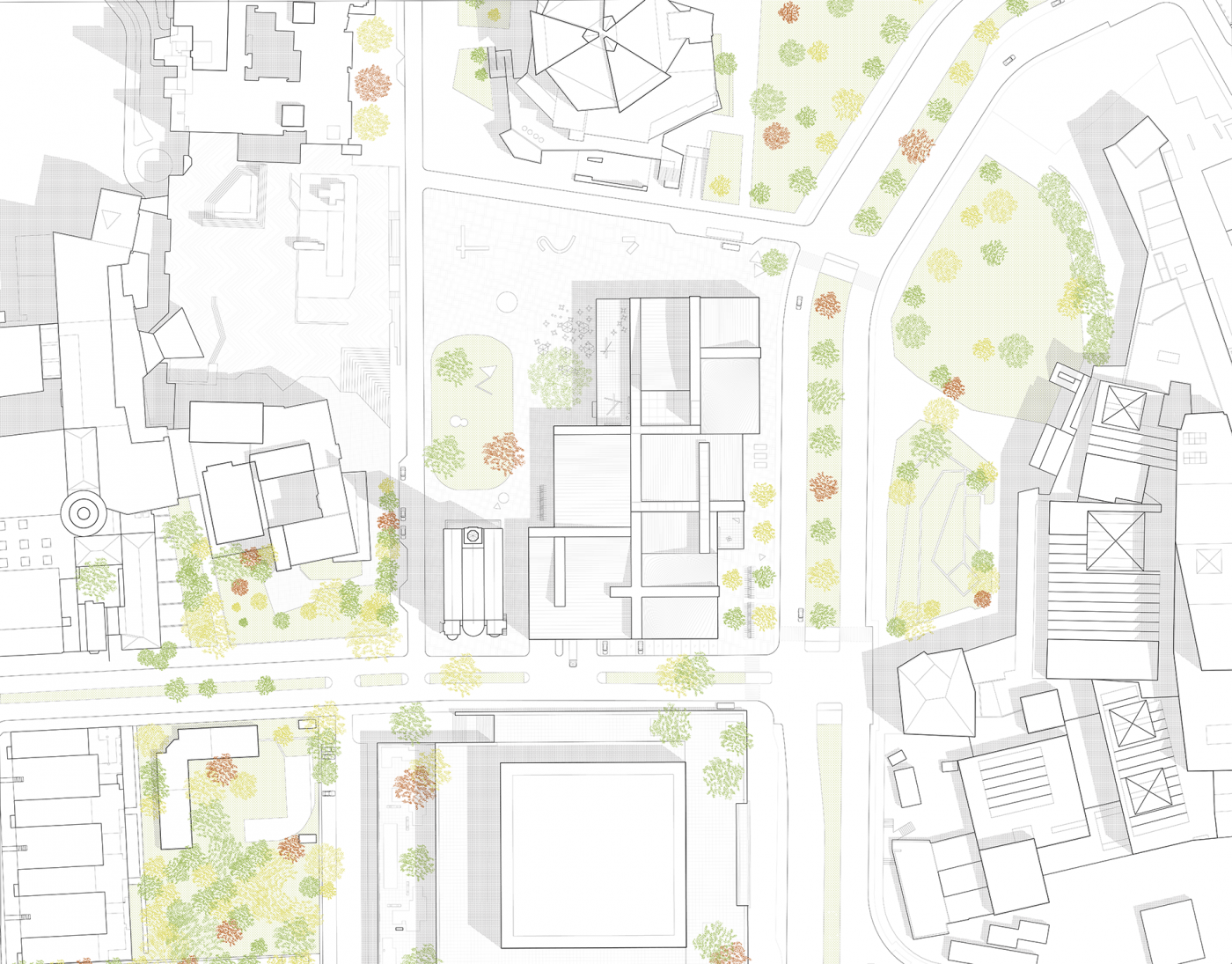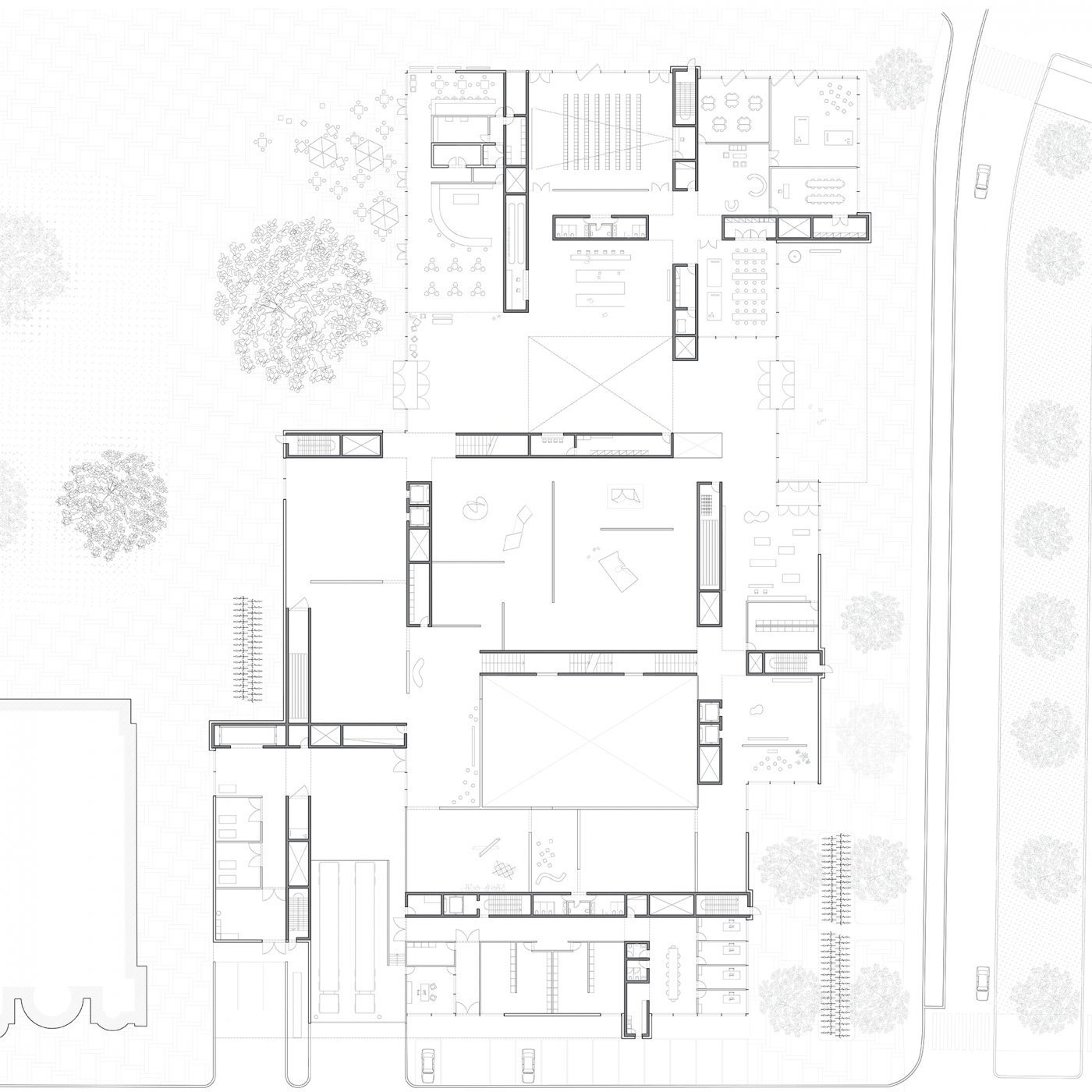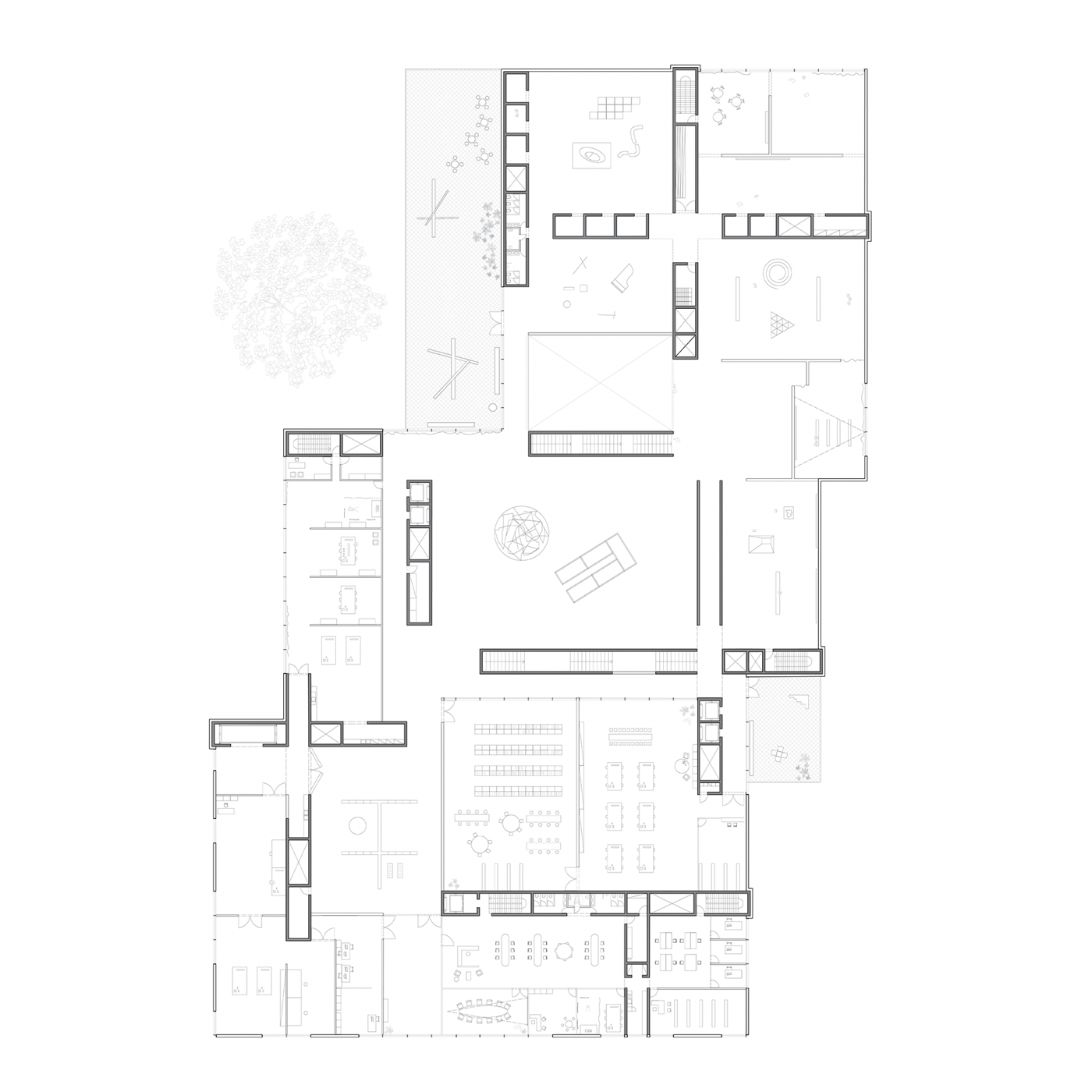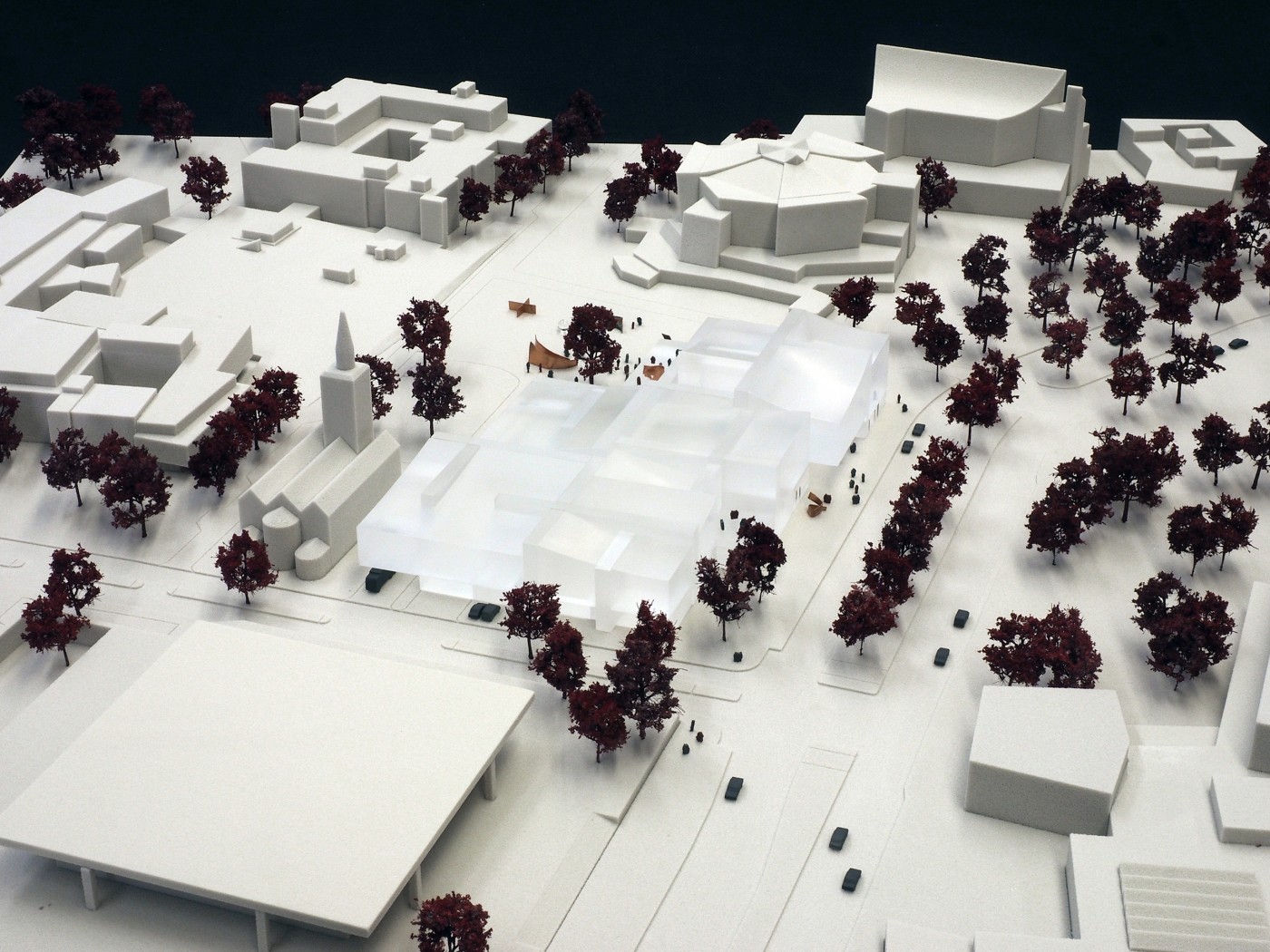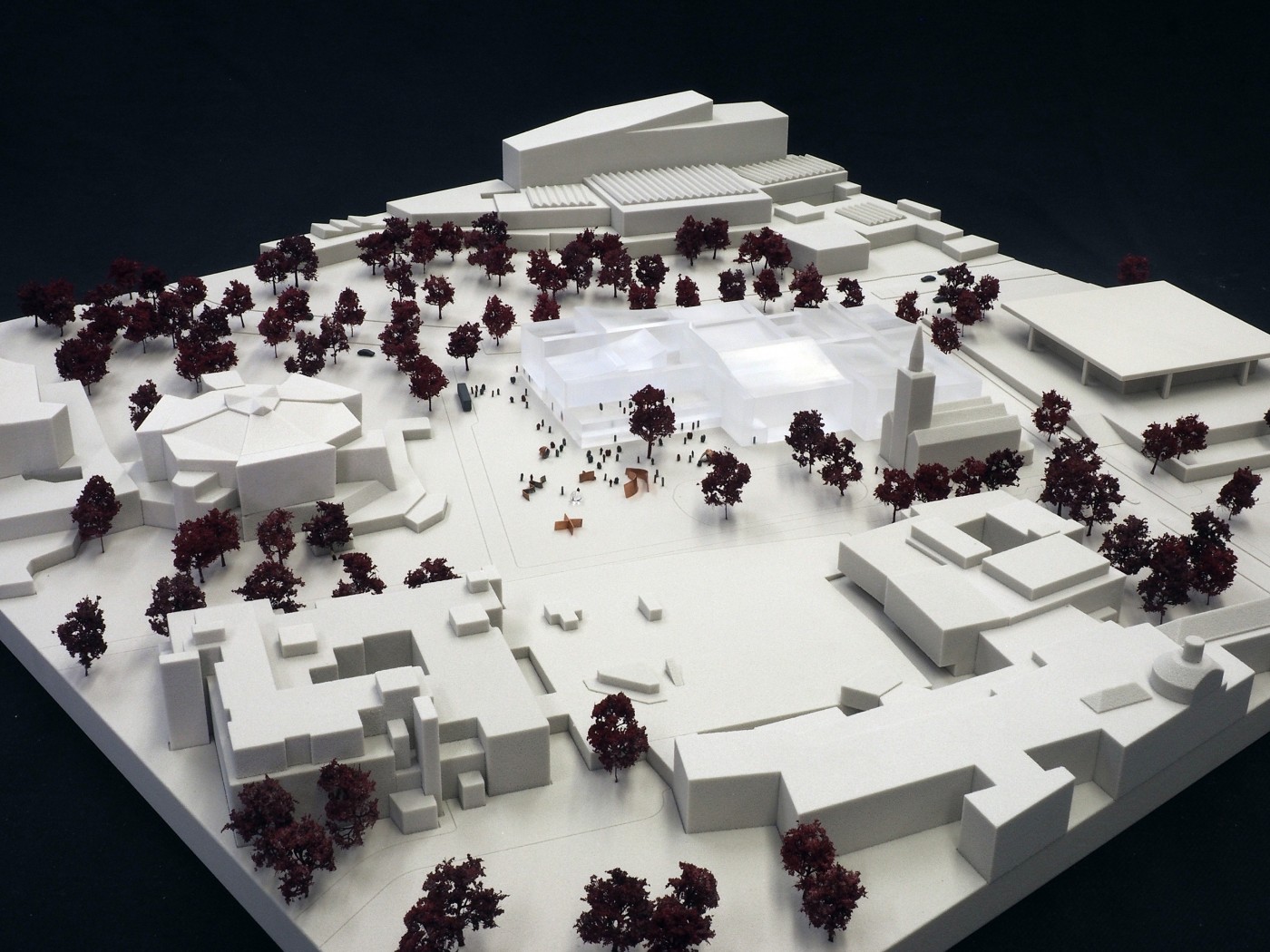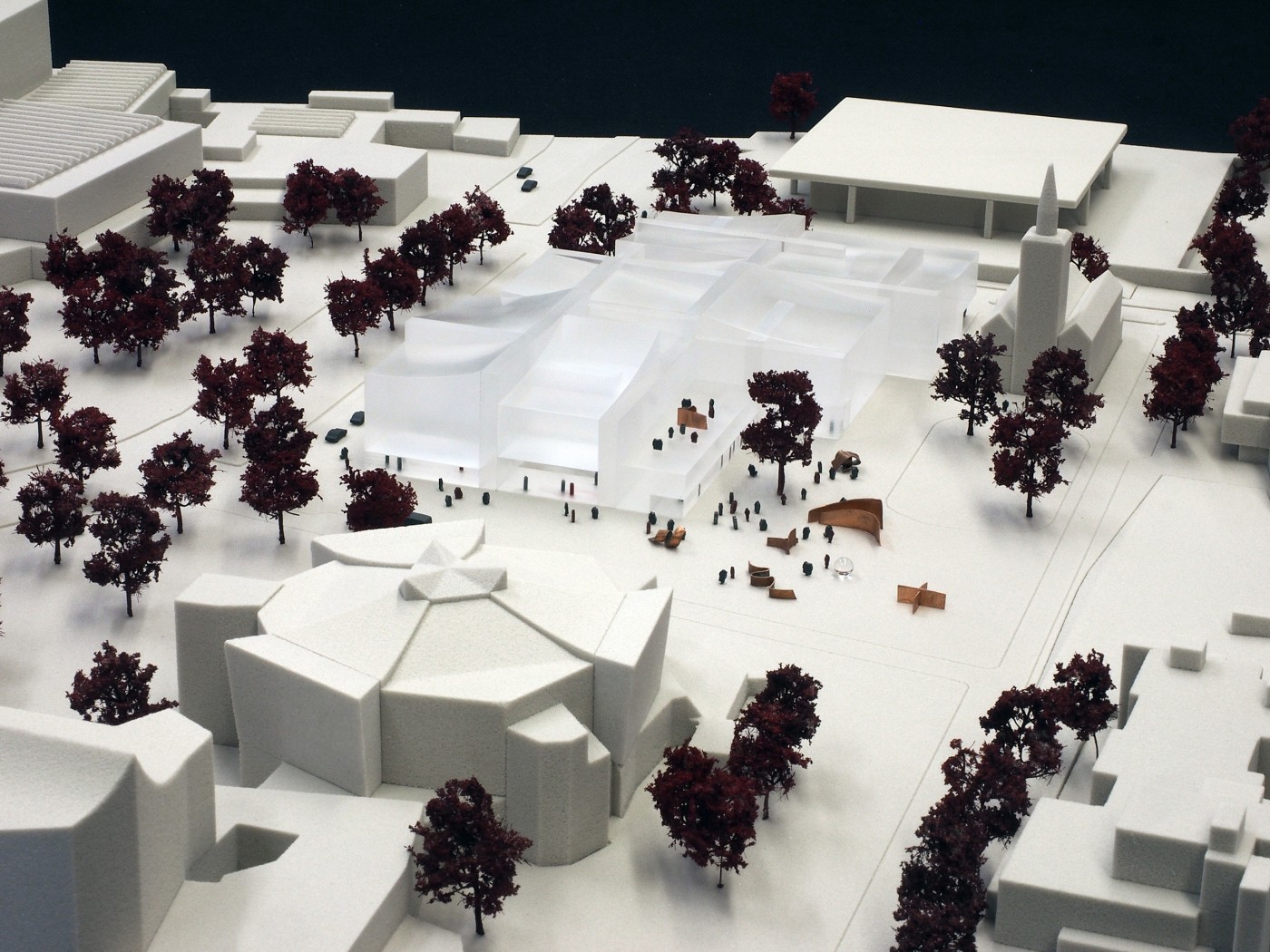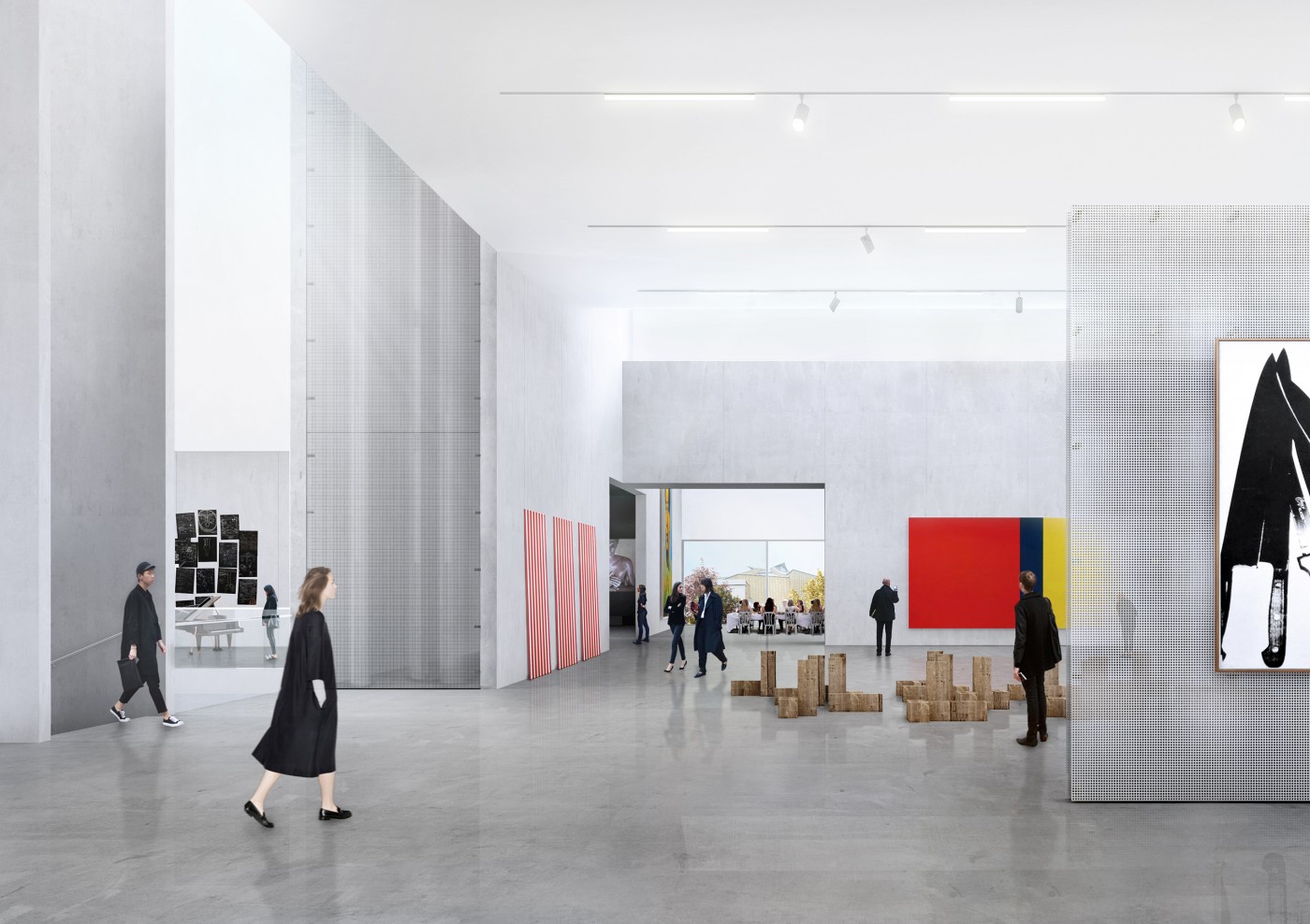1653-SOI-BER.DE-2016
Client: Stiftung Preussischer Kulturbesitz
Status: Competition (2016)
Location: Berlin, Germany
Coordinates: 52.508178, 13.368457
Climate: Continental, Temperate
Materials: Glass, Concrete
Environment: Urban
Visualizer: Studio
Budget: 110.000.000 €
Scale: 22.600 ㎡ Large
Ratio: 4.867,26 €/㎡
Types: Cultural, Museum
The design for Museum des 20 Jahrhunderts (M20) offers an opportunity to fundamentally reassess the typology of the museum, shifting it from what some see as a passive repository of sacred objects to a tantalizing and participatory platform, a space of public exchange that embraces the complexity of today.
Rather than a series of static rooms, m.XX redefines the museum as an open structure. As an overarching gesture, a series of shifting “Wandscheiben“ form the framework of the plan. The structure redefines the classicist enfilade typology towards a dynamic spatial system that opens up new vistas, spatial linkages and juxtapositions. Apart from organizing space and flow, these elements serve as the main structural walls, allowing large column free galleries, atria and light wells and a variety of ceiling heights. With their 3 meter width, they accommodate circulation stairs and elevator cores, mechanical spaces, bathrooms, kitchens, storage and equipment.
Where Mies’ transparency is enabled by a solid plinth, m.XX responds to this ‘analog’ contraposition by fusing openness with shrouding. Through the interweaving of serving and served spaces, and the calibration of openings and thresholds, the museum space gains tension. It can evoke renewed curiosity in a surrounding that has grown predictable. The new museum space is bold and dynamic, informal and improvisational. It becomes an environment not merely to view art, but to stimulate the understanding of transhistorical cultural forces, conflicting ideologies, and the aura of ideas. Its fluid organizational order, deliberate ambiguous form and meticulously calibrated edge, offer a new interpretation of the “living museum”. The future art museum is not isolated and exclusive, but open and permeable. Not a static shrine, but a constantly evolving public event.
Museums should not sit on plinths, as they were Apollonian sanctuaries, far removed from the public. Like a Carl Andre piece, we place the museum structure on equal footing with the tapestry of the city. The volume is broken down into three shifting frames. This creates an extended exchange surface between institutional and urban life. The massing and siting responds to local moments while conversing with its direct neighbors. The elevation along the Sigismund Strasse echoes the National Gallery by Mies in width and height. In two confident shifts the building volume ascends northbound to acknowledge the St Matthäi Kirche and to clearly announce itself towards the Scharoun Platz, the ensemble of Kammermusiksaal and Philharmonie and the Potsdamer Straße.
The overall volume, through a series of slightly curvilinear roofs, breaks down to create a humane scale, yet is unified in a continuous cloak, creating a new equivocal figure. A series of large windows and public terraces open the building up and offer views to key landmarks.The urban form does not merely make legible the plan’s generative diagram. It occupies a space somewhere between abstraction and ‘compassion’ say, between Miesian reductive geometry and Scharoun’s elaborate articulation – a form that has personality and engenders empathy. The Kulturforum is at the center of historic confrontations and urban encounters. Within this archipelago of characters, m.XX finds its own form and center of gravity.
